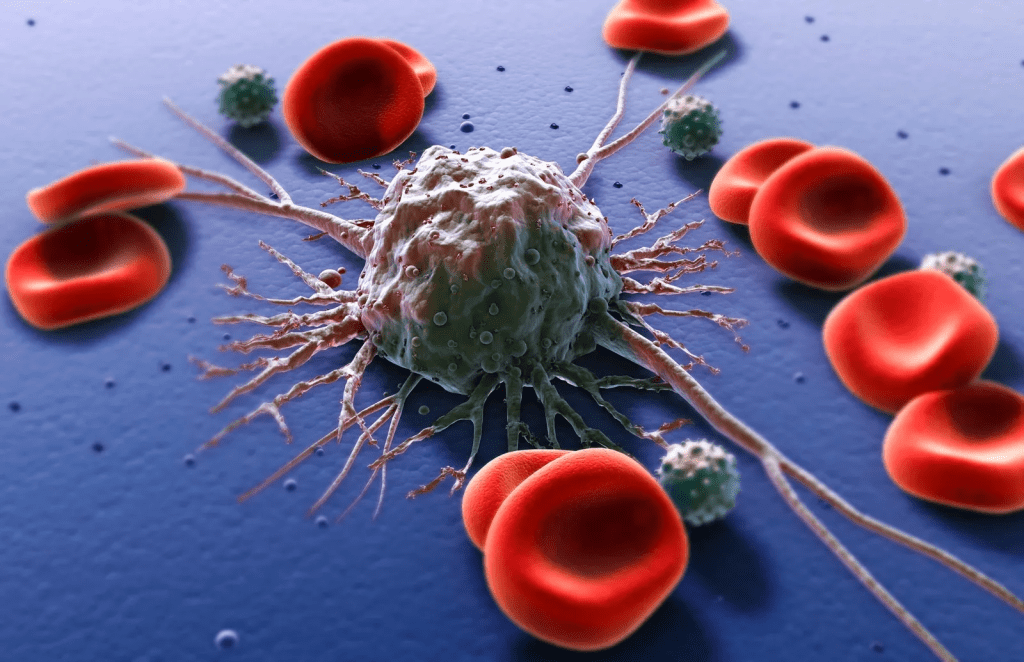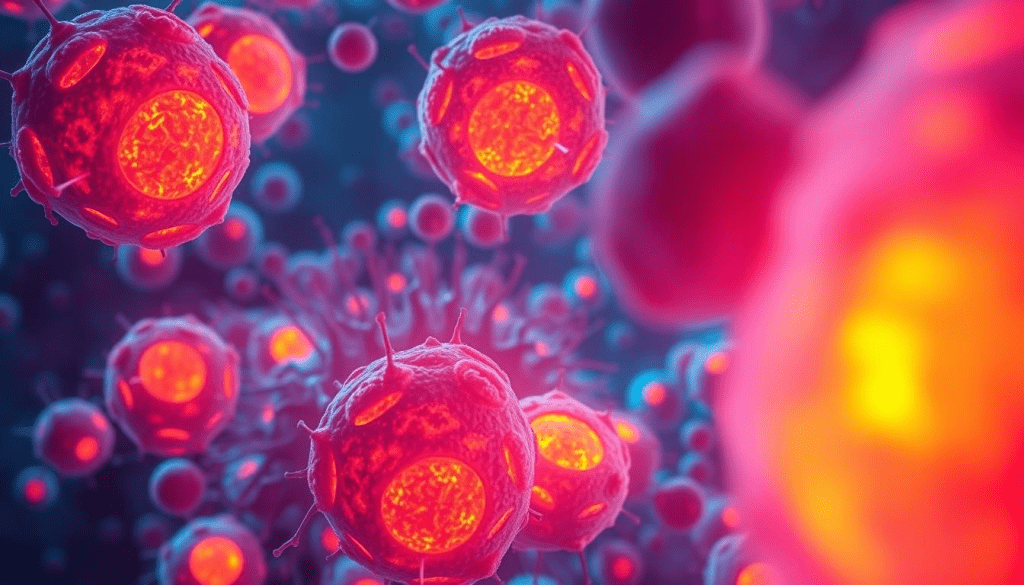Last Updated on November 13, 2025 by
Get a timeline of the disease. We analyze how fast leukemia progresses in children and how early detection impacts the leukemia survival rate.
Leukemia is a blood cancer that starts when the bone marrow makes bad white blood cells, called leukemia cells. In kids, how fast leukemia grows depends on the type. Acute Lymphoblastic Leukemia (ALL) is the most common and grows quickly, needing quick treatment.

It’s important for parents and caregivers to know how leukemia progresses and its survival rates in kids. We’ll look at the different leukemia types, how fast they grow, and survival rate stats. This will give a full picture.
It’s important to understand blood cancer in kids to find better treatments. Leukemia, a blood cancer, is the top cancer in children. We’ll look at what causes it, its effects, and how it’s different in kids.
We don’t know all the reasons for leukemia in kids. But research points to genetics and environment. Unlike some adult cancers, most childhood leukemia isn’t inherited. Instead, it might come from random genetic changes during childhood.

Potential risk factors include radiation, certain genetic syndromes, and infections. But, many times, we just don’t know the cause.
Leukemia messes with the bone marrow, where blood cells are made. It creates abnormal white blood cells that block normal cell production. This can cause anemia, infections, and bleeding disorders because of the lack of healthy cells.
The bad cells also take over the bone marrow. This makes it hard for the body to fight off infections and heal.
Childhood leukemia is very different from adult leukemia. Kids often get acute lymphoblastic leukemia (ALL), which is very treatable. Adults, on the other hand, tend to get acute myeloid leukemia (AML) or chronic leukemias.
Thanks to better treatments, kids with leukemia usually do better than adults. This is because of progress in chemotherapy and care.
Childhood leukemia is a big health issue worldwide. It happens more in some places than others. In 2021, there were 4.8 new cases per 100,000 children. This shows why we need to understand these trends to help kids.
The global incidence of childhood leukemia changes from place to place. In some countries, it’s much higher than in others. This is because of many factors, like how well they can diagnose and report cases.
Leukemia statistics show that Acute Lymphoblastic Leukemia (ALL) is the most common in kids. Knowing these leukemia statistics helps doctors create better treatments. This can lead to better results for patients.
Childhood leukemia trends show that survival rates have improved over time. This is thanks to better medical care. But, not all kids have the same access to healthcare, which affects their chances of survival.
To tackle childhood leukemia, we must keep watching the global incidence of childhood leukemia. We also need to share the best ways to diagnose and treat it. This way, we can help more kids fight this disease and win.
Looking at childhood leukemia trends over time helps us understand what causes it. This includes things like pollution, genetics, and how well treatments work. This knowledge is key for making smart choices in healthcare.
Acute Lymphoblastic Leukemia (ALL) is the main leukemia in kids. It grows fast and needs quick medical help. Being the most common leukemia in kids, ALL moves quickly, making early diagnosis and treatment key.
ALL’s fast growth can worry families. But thanks to new medical care, the success rate of leukemia treatment has gone up. Now, kids with ALL have a 5-year survival rate over 86%, showing how well modern treatments work.

ALL quickly affects the lymphoid cells in the bone marrow. This causes a buildup of young lymphocytes. This buildup lowers the production of normal blood cells, making patients more likely to get infections, anemia, and bleeding.
Key signs of ALL’s fast growth include:
Knowing how acute lymphoblastic leukemia grows is key for doctors to give the right care fast. This helps improve how well kids do and their quality of life with ALL.
We keep seeing better ways to treat ALL, thanks to research. New treatments like targeted therapies, immunotherapies, and better chemotherapy plans are being explored. These aim to boost the leukemia survival rate and lessen side effects.
Acute Myeloid Leukemia (AML) is a serious disease that grows fast in kids. It’s not as common as Acute Lymphoblastic Leukemia (ALL), but it’s just as tough because it’s so aggressive.
AML happens when the bone marrow makes too many bad white blood cells. These cells can’t fight off infections well. They also take up space, making it hard for the body to make healthy blood cells. This can lead to anemia, infections, and bleeding problems.
Treatment for AML must start right away and be very strong. Doctors use chemotherapy first, and sometimes a bone marrow transplant is needed. How well a child does depends on the type of AML, their age, and how the disease reacts to treatment.
It’s important to understand how fast and serious AML is for those going through treatment. Thanks to ongoing research, treatments are getting better. This gives hope for a brighter future for kids with AML.
Getting an AML diagnosis can feel scary, but with the right care, many kids beat it. We aim to give our patients the best care possible. This includes helping with their physical, emotional, and mental health needs.
CML, or Chronic Myeloid Leukemia, is a less common leukemia in kids. It grows slowly. Unlike other leukemias, CML moves slowly, staying in a chronic phase for years before getting worse.
This slow growth is what makes CML different. The chronic phase of CML has a high white blood cell count. Patients might not show symptoms for a long time.
The chronic phase of CML can last for years. During this time, the disease may not cause many symptoms. The white blood cell count can be high, but patients can live active lives.
Managing this phase is key to controlling the disease. It offers a chance for a slower treatment approach. But, it also means watching closely to stop the disease from getting worse.
Key aspects of managing CML’s chronic phase include:
Understanding CML’s slow growth helps doctors create better treatment plans. This improves the life quality of kids with this condition.
Spotting leukemia early is key. It begins with noticing the first signs and symptoms. Symptoms like fatigue, infections, and bleeding hint at the disease’s presence.
A low count of leukocytes, or white blood cells, is a warning sign. These cells fight off infections. A blood test showing low leukocytes might mean the bone marrow isn’t making enough healthy cells, a sign of leukemia.
But, a low leukocyte count can mean other things too. It’s not always leukemia. Yet, if you have other symptoms, it’s worth checking further.
Leukemia can also show up in abnormal white blood cell patterns. A blood test can spot these odd cells. These cells can take over the bone marrow, causing problems.
Key signs of abnormal white blood cells include:
Leukemia symptoms can get worse over time. They often start with general signs like tiredness, weight loss, and frequent infections. As it gets worse, symptoms like bone pain, swollen lymph nodes, and bleeding or bruising can appear.
Knowing when these symptoms start is important. It helps catch the disease early. Parents and doctors should watch for any symptoms that don’t go away or get worse.
“Early recognition of leukemia symptoms can significantly impact treatment outcomes.”
By knowing the early signs and symptoms of leukemia, we can get medical help sooner. This can lead to better treatment results.
Diagnosing leukemia in children is a detailed process. It starts when a child shows signs like tiredness, frequent infections, or bruises. Doctors then begin tests to find out what’s causing these symptoms.
Diagnosing leukemia requires several tests. These help doctors understand if the child has leukemia, what type it is, and how far it has spread. “Early diagnosis is critical in leukemia, as it allows for timely intervention and improves treatment outcomes,” says why quick and accurate diagnosis is key.
The first step is a detailed medical history and physical check-up. Doctors look for signs like swollen lymph nodes and an enlarged liver or spleen. They also check for pale skin.
After the initial check-up, several tests follow. These include:
These tests help find any signs that might suggest leukemia. But a final diagnosis needs more detailed tests.
A bone marrow examination is a key test. It involves taking a sample from the hipbone or another large bone. The sample is then examined under a microscope for leukemia cells.
Genetic and molecular testing are also important. These tests look for genetic changes or mutations in leukemia cells. This helps predict how the disease will progress and guides treatment.
“The genetic makeup of leukemia cells can significantly influence treatment choices and outcomes,” showing why these tests are so important.
After diagnosing leukemia, doctors determine the stage and risk level. Staging shows how far the disease has spread. Risk classification looks at the child’s age, white blood cell count, and genetic traits of the leukemia cells.
This information is key to creating a treatment plan. It helps doctors tailor the treatment to fit the child’s needs, balancing effectiveness with side effects.
The diagnostic process can be tough for families. But, thanks to new medical technologies and a detailed approach, doctors can offer effective treatments and support.
The outlook for kids with leukemia has gotten much better. Thanks to new research and treatments, survival rates are up. This gives hope to families dealing with this disease.
We’ve made big strides in fighting leukemia, mainly in kids. The 5-year survival rate for Acute Lymphoblastic Leukemia (ALL) is now over 86%. This shows how well modern treatments work and the hard work of doctors around the world.
Chronic Myeloid Leukemia (CML) is rare in kids but serious. New treatments like tyrosine kinase inhibitors (TKIs) have changed the game. These drugs help kids with CML live normal lives.
Studies show kids with CML can live long lives with the right treatment. It’s key to keep up with check-ups and follow treatment plans closely for the best results.
Many things affect blood cancer survival rates. These include the type of leukemia, the patient’s age, and how well they respond to treatment. For example, ALL is more treatable than Acute Myeloid Leukemia (AML) in kids. Genetic factors and certain molecular markers also play a role.
Knowing these factors helps doctors create better treatment plans. This increases a patient’s chance of survival. We keep learning about leukemia to find even better treatments.
Keeping up with new research and treatments helps families make informed choices. We aim to give top-notch care to patients from around the world. This includes those with leukemia and other complex diseases.
Childhood leukemia’s outcome depends a lot on how fast treatment starts. Quick action is key to managing the disease well. We need to know what affects treatment success.
Leukemia treatment varies based on the type, the child’s health, and the disease stage. Treatment urgency is very important in acute leukemia. This is because the disease can get worse fast if not treated right away.
The idea of critical treatment windows means the best time to start treatment for the best results. For kids with acute lymphoblastic leukemia (ALL), starting treatment quickly is very important. Waiting too long can make the disease harder to treat.
Knowing these critical times helps doctors focus on treatment and choose the best plans. Quick treatment can lead to better results and fewer complications.
Whether leukemia can be cured depends on many things such as the type, the child’s age, and how well they respond to treatment. For many kids with ALL, the outlook is good. Cure rates can be as high as 85% to 90% in some cases.
Thanks to new research and treatments, more kids with leukemia are surviving. By understanding what affects treatment success, we can keep improving care. This helps more kids live longer and healthier lives.
Every child with leukemia is different, and treatment must fit their needs. By focusing on treatment urgency and using the latest medical knowledge, we aim for the best outcomes for these kids.
The future of childhood leukemia care looks bright. Ongoing research and new treatments are making a big difference. We’re learning more about the disease and finding better ways to treat it.
New therapies like targeted and immunotherapies are showing great promise. These could lead to even better survival rates and quality of life for kids with leukemia. Our goal is to provide top-notch healthcare and support to patients from around the world.
Leukemia research is always moving forward, bringing new hope for treatments. We’re excited about the possibilities for improving care. By staying ahead in treatment advancements, we can give kids with leukemia the best care possible.
Yes, leukemia can be cured in children. This is true, thanks to quick and effective treatment. The 5-year survival rate for acute lymphoblastic leukemia (ALL) is over 86%.
The exact causes of leukemia in kids are not fully known. But research points to genetic and environmental factors.
Leukemia’s speed in kids depends on the type. ALL moves fast, while CML is slower.
Early signs in blood work include low leukocytes and abnormal white blood cells. These are key indicators.
Diagnosing leukemia in kids involves several tests. These include bone marrow exams, genetic tests, and imaging studies.
Treatment success for leukemia in kids, mainly for ALL, has greatly improved. The 5-year survival rate is over 86%.
Yes, leukemia can be cured with the right treatment. Success rates depend on the leukemia type and treatment response.
Leukemia’s white blood cell count can vary. But abnormal counts often signal leukemia.
Leukemia disrupts blood cell production. It leads to an abnormal buildup of white blood cells.
Childhood leukemia differs from adult leukemia. Types, progression rates, and treatment responses vary.
CML’s prognosis in kids varies. But, with the right treatment, many can manage the disease and live long-term.
Globally, childhood leukemia’s incidence is 4.8 new cases per 100,000 kids. Rates differ by region.
Subscribe to our e-newsletter to stay informed about the latest innovations in the world of health and exclusive offers!